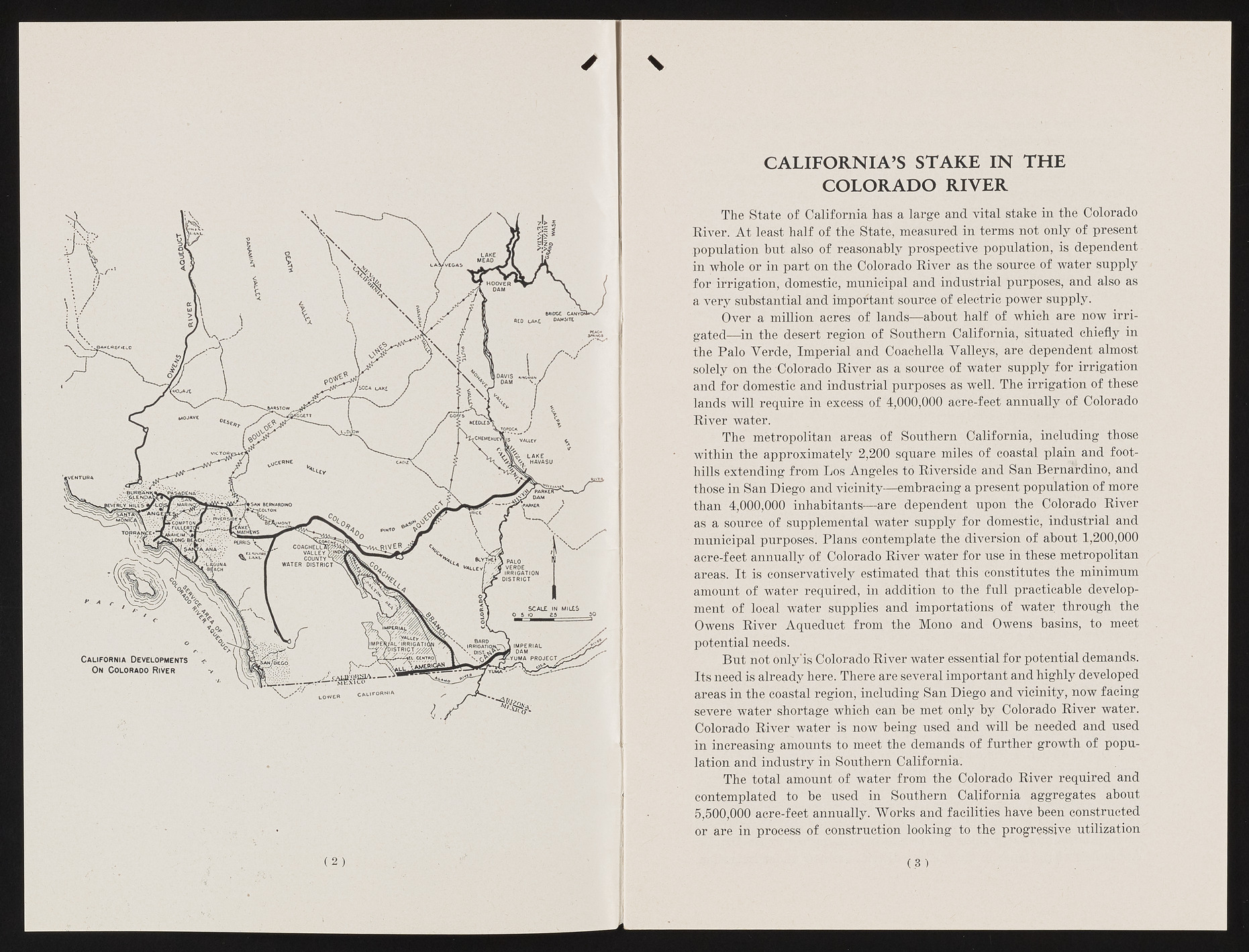Copyright & Fair-use Agreement
UNLV Special Collections provides copies of materials to facilitate private study, scholarship, or research. Material not in the public domain may be used according to fair use of copyrighted materials as defined by copyright law. Please cite us.
Please note that UNLV may not own the copyright to these materials and cannot provide permission to publish or distribute materials when UNLV is not the copyright holder. The user is solely responsible for determining the copyright status of materials and obtaining permission to use material from the copyright holder and for determining whether any permissions relating to any other rights are necessary for the intended use, and for obtaining all required permissions beyond that allowed by fair use.
Read more about our reproduction and use policy.
I agree.Information
Digital ID
Permalink
Details
Member of
More Info
Rights
Digital Provenance
Publisher
Transcription
? (2 ) \ CALIFORNIA’S STAKE IN THE COLORADO RIVER The State of California has a large and vital stake in the Colorado River. A t least half of the State, measured in terms not only of present population but also of reasonably prospective population, is dependent in whole or in part on the Colorado River as the source of water supply for irrigation, domestic, municipal and industrial purposes, and also as a very substantial and important source of electric power supply. Over a million acres of lands— about half of which are now irrigated— in the desert region of Southern California, situated chiefly in the Palo Verde, Imperial and Coachella Valleys, are dependent almost solely on the Colorado River as a source of water supply for irrigation and for domestic and industrial purposes as well. The irrigation of these lands will require in excess of 4,000,000 acre-feet annually of Colorado River water. The metropolitan areas of Southern California, including those within the approximately 2,200 square miles of coastal plain and foothills extending from Los Angeles to Riverside and San Bernardino, and those in San Diego and vicinity-—embracing a present population of more than 4,000,000 inhabitants— are dependent upon the Colorado River as a source of supplemental water supply for domestic, industrial and municipal purposes. Plans contemplate the diversion of about 1,200,000 acre-feet annually of Colorado River water for use in these metropolitan areas. It is conservatively estimated that this constitutes the minimum amount of water required, in addition to the full practicable development of local water supplies and importations of water through the Owens River Aqueduct from the Mono and Owens basins, to meet potential needs. But not bnly'is Colorado River water essential for potential demands. Its need is already here. There are several important and highly developed areas in the coastal region, including San Diego and vicinity, now facing severe water shortage which can be met only by Colorado River water. Colorado River water is now being used and will be needed and used in increasing amounts to meet the demands of further growth of population and industry in Southern California. The total amount of water from the Colorado River required and contemplated to be used in Southern California aggregates about 5,500,000 acre-feet annually. Works and facilities have been constructed or are in process of construction looking to the progressive utilization H ? I 1 1 I - • .

